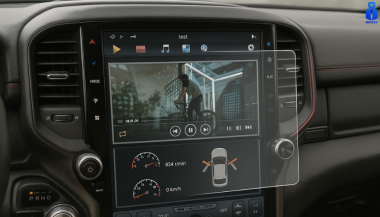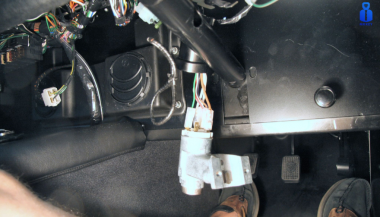Have you lost your Westfalia towbar key just before a long-planned trip or an important towing job? Don’t worry, you’re not alone. Every year, thousands of drivers face the same issue: the towbar key disappears right when it's needed most.
Westfalia detachable towbar keys are usually used only a few times per year – often for summer holidays, camping trips, towing, or moving. Because they are used so rarely, they often get forgotten for months. It's easy to lose track of where they were last placed: in the glove compartment, a drawer in the garage, or a coat pocket?
Fortunately, there's a simple solution – without having to replace the entire towbar system.
Step 1: Check the Lock Cylinder for a 5-Digit Code
Take a close look at the front of your Westfalia towbar lock, around the keyhole. Many models have a 5-digit code engraved directly into the metal.
If the code is between 20000 and 50000, it is your personal key code.
This code allows professional key services (like MR-KEY) to create a perfectly matched replacement key – without the original.
Examples of valid codes:
23456
27891
49821
You can enter this code directly into an online order form.
Order a replacement key here:
https://mr-key.com/cat/towbars-keys
What if You Only See 3 Digits?
Sometimes, you might only find a 3-digit number on the lock body (e.g., 104, 287). Unfortunately, these numbers are not valid key codes. They usually refer to batch numbers or internal components.
In this case, we recommend:
Conducting a thorough search for the original key (glove compartment, toolbox, jacket pockets, etc.)
If the key cannot be found, consider replacing the towbar locking mechanism
Tip: Make a Spare Key While You Still Can
If you still have your original Westfalia towbar key, now is the perfect time to make a copy.
Many Westfalia keys show a code like: 2W01 to 2W50
This code is usually engraved on the metal shaft of the key and matches your towbar lock. With this code, we can quickly and affordably produce a precise duplicate.
Why make a spare key?
Avoid last-minute panic before departure
Reduce costs by preventing lock replacement
Fast delivery when ordering by code
Order here: https://mr-key.com/cat/towbars-keys
Fast and Professional Westfalia Key Service
At MR-KEY, we specialize in duplicating Westfalia towbar keys by code. Our service is fast, precise, and hassle-free:
Simply provide the 5-digit lock code (20000–50000)
We cut the key using high-precision machines
Every key is checked before shipping
In most cases, shipping is completed within 24 hours.
Quick Overview
| Situation | Can a New Key Be Made? | What to Do |
|---|---|---|
| 5-digit code on the lock (20000–50000) | Yes | Order a key by code |
| Only 3-digit number on the lock | No | Search for the key or replace the lock |
| Original key with "2W" code present | Yes | Have a spare key made |
Tips: How to Avoid Losing Your Key in the Future
To avoid ending up in this situation again, follow these simple tips:
Store your spare key in your vehicle documents folder or glove box
Label your keychain with "Towbar" for easy identification
Take a photo of your key code and save it on your phone or in the cloud
These small steps can save you time, stress, and money.
Losing your Westfalia towbar key doesn't have to ruin your travel plans. As long as your lock has a valid 5-digit code between 20000 and 50000, a replacement key can be made and shipped quickly.
And if you still have the original key? Make a copy now – a small investment for long-term peace of mind.
Order your Westfalia replacement key now:
https://mr-key.com/cat/towbars-keys
Safe travels!

_1753865226.jpg)
_1750675930.jpg)

_1736346259.jpg)
